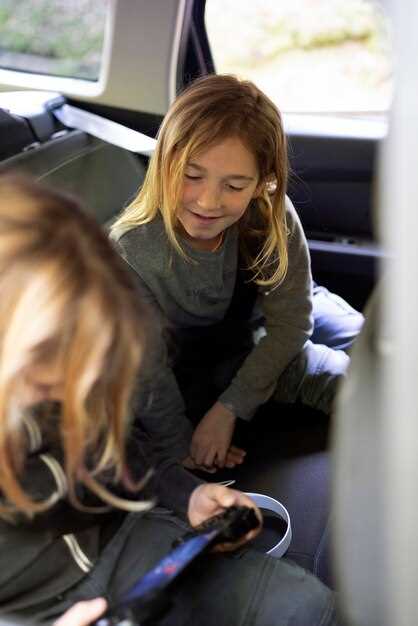
Ensuring the safety of your child while traveling in a Dodge Charger is of paramount importance. Proper installation of a car seat is a critical step in protecting young passengers during every journey. Utilizing a car seat that is appropriate for your child’s age, weight, and height is essential to provide maximum safety on the road.
When installing a car seat in your Dodge Charger, always refer to both the car seat manufacturer’s instructions and your vehicle’s owner manual. Improper installation can significantly reduce the effectiveness of the seat in the event of an accident. Take the time to ensure that the car seat is secured tightly and does not move more than an inch side to side or front to back.
In addition, familiarize yourself with the various types of car seats available, such as rear-facing, forward-facing, and booster seats. Each serves a different purpose and is designed for specific age groups. Remember, a rear-facing seat is recommended for infants and toddlers, while forward-facing seats are suitable for older children. Ensure your child’s seat is age-appropriate to maximize safety during travel.
Choosing the Right Child Seat for Your Dodge Charger

Selecting the appropriate child seat for your Dodge Charger is essential for ensuring the safety of your little ones during car travel. Begin by considering the age, weight, and height of your child, as these factors dictate which type of seat is suitable. Child seats are generally categorized into three types: rear-facing, forward-facing, and booster seats.
For infants and toddlers, a rear-facing seat provides the highest level of safety. In a Dodge Charger, ensure that the seat can securely fit in the back seat while allowing the front seats to remain comfortable for adult passengers. As your child grows, transition to a forward-facing seat, which should also include a five-point harness to keep your child safe and snug.
Once your child outgrows the forward-facing seat, a booster seat is the next step. A booster seat elevates your child to ensure that the vehicle’s seat belt fits correctly across the lap and chest, providing optimal safety. When selecting a booster seat, check for compatibility with your Dodge Charger’s seat design and ensure it can be installed securely without any risk of movement.
It’s important to verify that any seat you consider meets safety standards set by the National Highway Traffic Safety Administration (NHTSA). Additionally, always refer to your Dodge Charger owner’s manual for specific installation guidelines tailored to your vehicle’s configuration. Proper installation is critical; a well-installed seat significantly reduces the risk of injury in the event of an accident.
Finally, regularly inspect your child’s seat to ensure it remains in good condition and check for any recalls that might affect its safety. Investing time in choosing the right child seat and ensuring its proper installation in your Dodge Charger will provide peace of mind and enhance the safety of your family on the road.
Proper Installation Techniques for Child Seats in Dodge Charger
Ensuring the safety of your child during travel in a Dodge Charger begins with the correct installation of the car seat. Follow these essential techniques to achieve a secure fit.
First, consult the owner’s manual of your Dodge Charger as well as the instruction manual for your specific child seat. These guides provide vital information regarding compatible installation methods and the location of anchors.
Choose the appropriate seating position for your child seat. The rear middle seat is often the safest option, but if it is not available or not compatible with your seat type, either of the rear side seats can be suitable as well.
Utilize the LATCH system if available. Locate the lower anchors in your Dodge Charger, which are typically found in the seat bight. Attach the LATCH connectors from your child seat to these anchors, ensuring they click securely into place. While securing, check that the seat does not move more than an inch side to side or front to back.
If you are installing a car seat using the seat belt, place the seat in the correct position and feed the lap and shoulder belt through the designated path in the child seat. Make sure the seat belt is locked and taut, preventing any looseness. You can usually achieve this by pulling the shoulder belt fully and then allowing it to retract slightly to lock.
Test the installation by giving the seat a firm shake at the base. A properly installed car seat should not shift more than one inch in any direction. If there is significant movement, reassess your installation technique. It may be necessary to re-thread the seat belt or reconnect the LATCH system.
For additional safety, regularly check the installation as well as the child seat’s expiration date. This ensures that you maintain the best protection for your child while traveling in your Dodge Charger.
Ensuring Optimal Safety Features in Your Dodge Charger for Children

When it comes to child safety in your Dodge Charger, it is essential to utilize the vehicle’s built-in safety features effectively. Start by ensuring that your child is secured in the appropriate car seat based on their age, weight, and height. This choice is crucial for their protection during travel.
The Dodge Charger is equipped with several safety elements designed to safeguard passengers, but their effectiveness increases significantly when they are used correctly. Always position the car seat in the back seat, as this area is generally considered the safest for young passengers during a collision.
Utilize the LATCH (Lower Anchors and Tethers for Children) system provided in your Dodge Charger for proper installation of the car seat. This system helps secure the car seat tightly, minimizing movement during travel. Before securing the car seat, consult your vehicle’s owner manual for specific instructions related to the Charger model.
Additionally, familiarize yourself with the Dodge Charger’s airbag system. It is advisable to turn off the front passenger airbag if a rear-facing car seat is installed in the front seat. Airbags can pose a significant risk to children in the event of deployment.
Regularly inspect your vehicle’s seat belts and ensure they are functioning correctly. A properly working seat belt system not only protects adults but also enhances the safety of child passengers. If the buckle or tension mechanism shows wear, consider having it serviced or replaced.
Finally, educate older children about the importance of wearing seat belts at all times. Reinforcing safety habits from a young age can help promote a culture of responsibility and vigilance regarding child safety in any vehicle.




